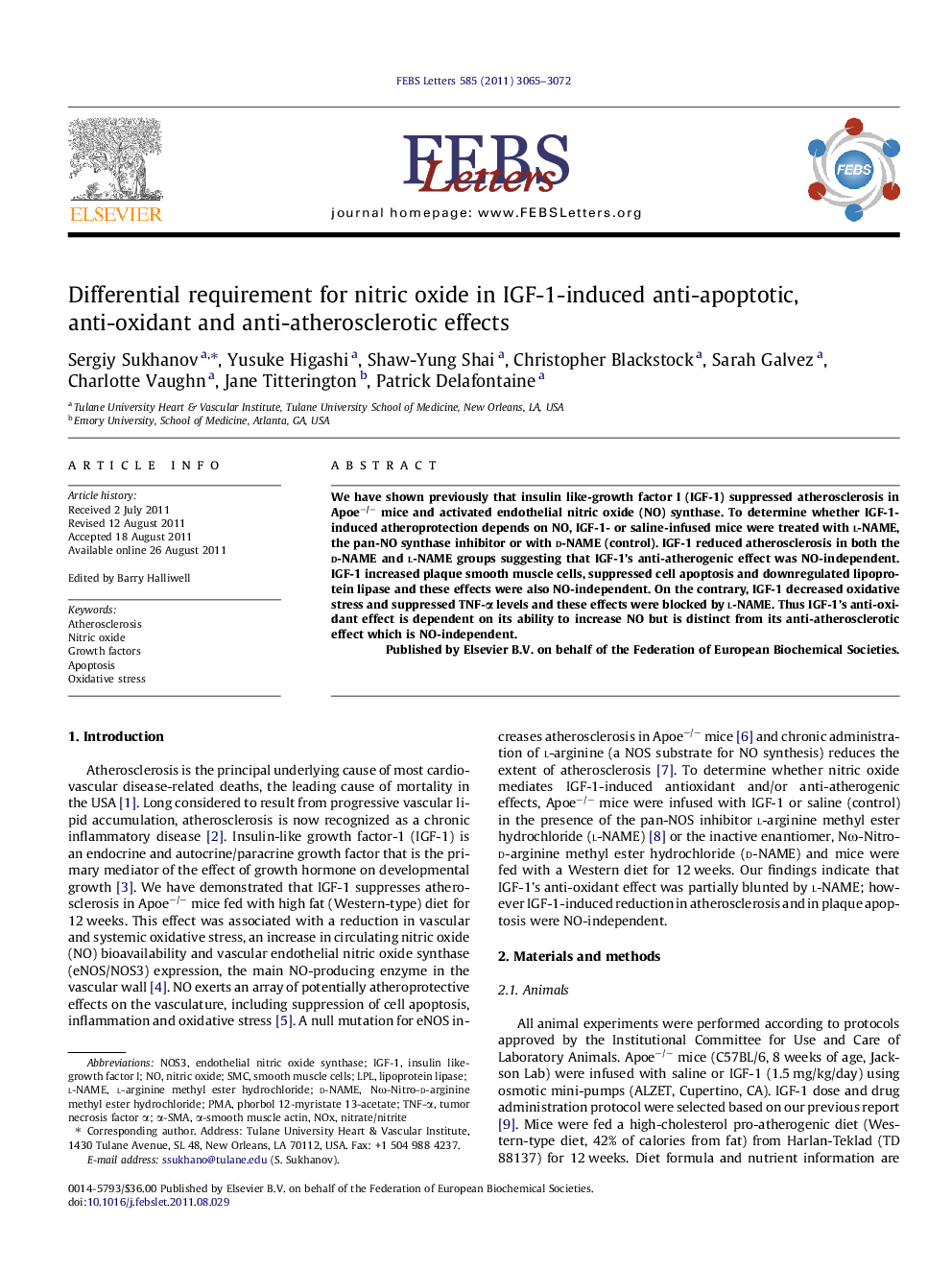| Article ID | Journal | Published Year | Pages | File Type |
|---|---|---|---|---|
| 2048633 | FEBS Letters | 2011 | 8 Pages |
We have shown previously that insulin like-growth factor I (IGF-1) suppressed atherosclerosis in Apoe−/− mice and activated endothelial nitric oxide (NO) synthase. To determine whether IGF-1-induced atheroprotection depends on NO, IGF-1- or saline-infused mice were treated with l-NAME, the pan-NO synthase inhibitor or with d-NAME (control). IGF-1 reduced atherosclerosis in both the d-NAME and l-NAME groups suggesting that IGF-1’s anti-atherogenic effect was NO-independent. IGF-1 increased plaque smooth muscle cells, suppressed cell apoptosis and downregulated lipoprotein lipase and these effects were also NO-independent. On the contrary, IGF-1 decreased oxidative stress and suppressed TNF-α levels and these effects were blocked by l-NAME. Thus IGF-1’s anti-oxidant effect is dependent on its ability to increase NO but is distinct from its anti-atherosclerotic effect which is NO-independent.
► IGF-1 increases nitric oxide and suppresses atherosclerosis. ► IGF-1-induced anti-atherosclerotic effect does not depend on nitric oxide bioavailability. ► IGF-1 decreases cell apoptosis and reduces oxidative stress in the atherosclerotic plaque. ► IGF-1’s anti-oxidant effect is partially nitric oxide-dependent. ► IGF-1 downregulates lipoprotein lipase in vivo and in cultured macrophages and these effects are nitric oxide-independent.
